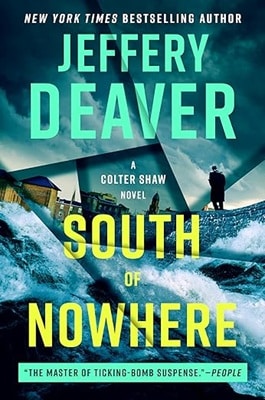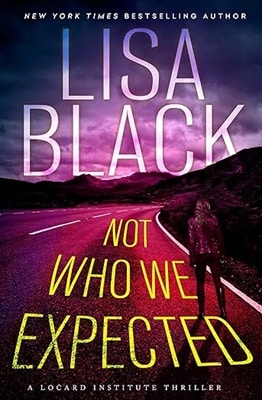
In 1990, Patricia Cornwell sold her first novel, Postmortem, while working at the Office of the Chief Medical Examiner in Richmond, Virginia. An auspicious debut, it went on to win the Edgar, Creasey, Anthony, and Macavity Awards as well as the French Prix du Roman d’Aventure prize—the first book ever to claim all these distinctions in a single year. Growing into an international phenomenon, the Scarpetta series won Cornwell the Sherlock Award for best detective created by an American author, the Gold Dagger Award, the RBA Thriller Award, and the Medal of Chevalier of the Order of Arts and Letters for her contributions to literary and artistic development.
Today, Cornwell’s novels and iconic characters are known around the world. Beyond the Scarpetta series, Cornwell has written the definitive nonfiction account of Jack the Ripper’s identity, cookbooks, a children’s book, a biography of Ruth Graham, and two other fictional series based on the characters Win Garano and Andy Brazil. While writing Quantum, Cornwell spent two years researching space, technology, and robotics at Captain Calli Chase’s home base, NASA’s Langley Research Center, and studied cutting-edge law enforcement and security techniques with the Secret Service, the US Air Force, NASA Protective Services, Scotland Yard, and Interpol.
Interview by Judith Erwin
Q With the release of your new book, Identity Unknown, you have written twenty-eight crime novels featuring the medical examiner, Kay Scarpetta. When planning Identity Unknown, what came first in the process?
Patricia: When I start any of my Scarpetta books, the first thing that is a bit of a true North for me, following the compass needle, is what am I curious about? For example, in the last Scarpetta book, A Natural Death, there had been a lot in the news about Bigfoot. I’d always been curious about Bigfoot. I started looking up things about it from a scientific standpoint and decided I was going to weave something about it into that story. Now we roll ahead to the new Scarpetta, Identity Unknown. There has been quite a lot in the news in the last couple of years about UAPs/UFOs, or reverse engineering on crashed flying saucers. Having done a lot of space research over the last decade, I was intensely curious. I’d been curious about it when I was doing the research with NASA. I started looking into it more and thought: What would Scarpetta do if she had a death, when at first glance it looks like someone might have been thrown out of some kind of space vehicle, especially since this individual was an astrophysicist? From there, I began research. I went to see the Green Bank telescope, which is the biggest moveable radio telescope in the world, located in West Virginia. I began trying to learn more about everything that has to do with that particular subject—extraterrestrials, outer space. But Identity Unknown is not just about that. There are other things going on, including some that have to do with Russia. It’s a big story.
Q What is the most challenging factor in writing a book?
Patricia: The most challenging part of any story is when you start it. Because what you’re really doing is you’re almost creating, like a computer program, what’s going to happen later. And if you don’t set it up properly, then it’s all going to fall apart as you get farther along the path. I have my ideas about locations and subplots. For example, in the beginning of Identity Unknown, Scarpettas is in the morgue, and she’s getting notice about this bizarre death that has occurred in an abandoned Wizard of Oz Theme Park. It’s some distance away. In the meantime, she’s finishing the autopsy of a child who died under very suspicious circumstances. Little does the reader know there’s going to be a connection between these cases.
Q Do you have a favorite scene in the book?
Patricia: It’s funny you would ask that because sometimes I do have favorite scenes. Many of the scenes in this new book are favorites. I love the helicopter flight because it’s full of adventure and drama. I love the Wizard of Oz Park—the weird thing that happens while they’re there, I enjoyed writing the underwater scene because I’ve done many years of scuba diving. When I envision something, it’s like I’m reliving it. It was fun to write about, and I say fun with quote marks. Anybody who writes knows there’s only so much fun because it’s a lot of hard work.
Q How long does it usually take you to create a novel?
Patricia: I spend a year on every book. A lot of that time is trying to figure out what the story is, and then it takes a tremendous amount of time to actually write it. You’re building and engineering a story that’s supposed to come alive.
Q Does authenticity ever get in the way of the story?
Patricia: I don’t let it get in my way because I don’t write science fiction. My rule is something has to be within the realm of possibility, and everything I talk about in Identity Unknown is possible—right down to whether or not there’s life beyond our planet. If I’m telling you a weird story about Roswell, or the strange experiences Scarpetta had in an off-limits storage area at the National Museum of Health and Medicine when she came across this misfiled big folder that had to do with Roswell, New Mexico—the alleged UFO crashes there in 1947—I had that happen to me. I’ve been to that museum a number of times.
Some years ago, they took me into a back storage area to show me the piece of Abraham Lincoln’s skull and the bullet from his autopsy when he was assassinated. While I was in this back area, I think the curator wasn’t thinking about a file drawer there that was taped up. It said, “Do not open.” I wandered over to look. It read, “Roswell.” I pointed at it to this person and said, “Hello! What is this?” Maybe she was telling the truth, but she kind of looked rather stricken, and said, “Oh, that’s a joke.” It didn’t seem like a joke when she said it, and it doesn’t seem like a joke when I look at it now. I didn’t open the drawer. Maybe it was a joke, but nothing else in that place was a joke. The place is full of very somber artifacts, like the Lincoln artifacts—Civil War artifacts, where you have amputated limbs with a musket ball that showed the kinds of injuries that those soldiers had, and the field amputations that were done, and skeletons from people who had strange disorders. So, I didn’t feel like it was a joke.
Getting back to the bigger subject, what I write about in any of my Scarpetta books has to be plausible. Does it mean true? Not necessarily. But is it plausible? Could it be true? Yes, it could be.
Q Did you have any particular goal in writing this book as far as character development?
Patricia: I’m not so sure. I would say that I had a goal about what I was going to do with the characters. What I’m always seeking is to do things where I can dig into their personalities and where you feel their presence. They’re not just paper dolls or stick figures. They’re fully formed humans. They feel and experience a lot of the same things we do. And of course, in this book, the major victim is someone that Scarpetta has a history with.
This gave me an opportunity to explore things about her past. Those who have followed the series over the years will be surprised to learn about a relationship Scarpetta had before she was with Benton, the person she’s married to now. It was long ago and somebody she had, shall we say, a very intense fling with in Italy. It comes full circle in Identity Unknown because the person ends up being killed. She has to work the case and in addition to try to figure out what happened where his body has been dumped—an abandoned Wizard of Oz Theme Park. We learn about how she is going to handle this when it’s somebody that she may not have seen in a long time, but somebody who was important to her once.
When you find out personal information about characters, it’s not only just about them, it’s about how it impacts those people around them. Not only did Benton have a reaction to hearing information about some intense love affair that Scarpetta had long, long ago, but there’s Marino and his reaction. Marino starts to think she’s had relationships, but never with him.
Q Will there be a Book 29?
Patricia: I’m working on a new one right now. In Identity Unknown, I’m dealing with the notion of whether there is life beyond this planet? I’ve talked to astronomers and all sorts of people, and they all say, “Oh, yes, indeed, there is.” In the next one, I’m exploring the paranormal subject of ghosts. What are ghosts? Are there technical reasons that we could have sightings? Are there scientific reasons for it? I’m having kind of fun with that.
Review by Judith Erwin
In the opening of Identity Unknown, Scarpetta is in the morgue with the body of a little girl whose death the forensic pathologist finds outrageous. Within a short time, the ME receives word of another death that will take her and her investigator, Pete Marino, on a perilous helicopter ride through a severe storm to an abandoned theme park where the second body has been found. Her niece, Lucy, a U.S. Secret Service Agent, is at the helm of the aircraft and only providing a limited amount of information.
The second death strikes a raw nerve for Scarpetta as the victim is someone from her past with whom she has a close tie. Exacerbating the situation is the brutal way in which the Nobel scientist was killed, the unique method used to place his body in the park, and the top-secret interest of the Secret Service. Further adding intrigue is a common thread between the two deaths giving rise to the question “Is it a coincidence, or is there a connection?”
With chilling detail, the author provides readers with a journey filled with vivid depictions of forensic science, character interactions, bizarre happenings, suspense, and life-threatening jeopardy.






